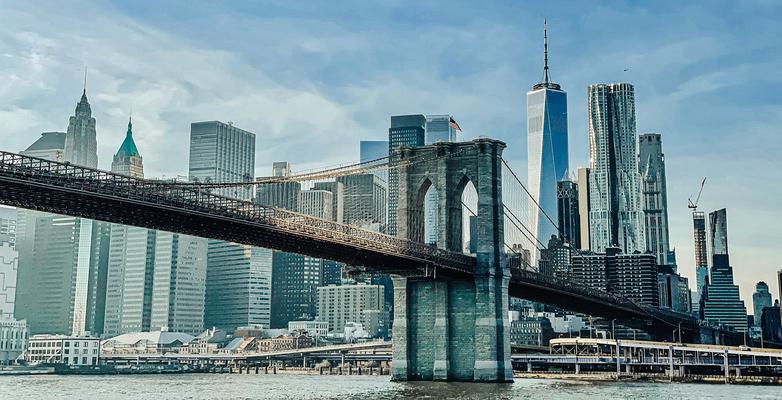
Why New York Matters for the Climate Fight
Passing historic legislation in Congress does little to cut emissions if projects never get funding. Which makes what's happening in New York State so critical for the climate movement – and a lesson for states across the country.
4 min read
Passing the historic Inflation Reduction Act (IRA) in 2021 introduced many in the climate fight to an entirely new emotion: The exhilaration of winning.
But greenhouse gas levels are singularly unmoved by vote counts and headlines. What matters, of course, are the results of this historic legislation. Shovels breaking dirt. Solar and wind projects displacing coal and gas-fired power plants. Emissions going down.
According to a recent report, the results of the IRA and its companion, the Bipartisan Infrastructure Law, have so far been mixed. The net result is that despite passing the biggest climate investment anywhere, the US is still off track to meet its climate commitments.
Which is why the remarkable pace of clean energy developments – and climate action initiatives more broadly – in New York State and New York City is so important. With just six years to halve global emissions to avert climate catastrophe, speed and scale are everything. And if New York knows how to do anything, it's how to think big.
Call It a New York State of Mind
The Empire State doesn't really do small.
As Climate Power reports, new clean energy projects in New York have spurred an estimated $103 billion in investments and over 15,000 jobs since passage of the IRA as of September of last year. As a result, New York is in the top 10 for states with the most clean energy projects in the US.
Critically, New York hasn't left climate investment or policy to the feds. The state has also passed ambitious legislation to reduce emissions and protect vulnerable communities with the Climate Leadership and Community Protection Act and a new environmental justice law.
And the state’s not done yet. Governor Hochul recently announced her intention to incorporate key aspects of the NY HEAT Act (a major focus for our New York coalition) into this year’s fiscal budget. This bill could end new subsidies for gas hookups and help transition neighborhoods off methane emitting natural gas.
That’s a huge deal considering building emissions make up an estimated 32% of New York’s total carbon emissions.
The challenge now ahead of New York is the same as for many forward-looking states with ambitious climate goals. Namely, how to overcome soaring inflation and technical obstacles like permitting in time to meet their climate targets. But if there’s any place that knows how to get creative, it’s New York. Now, the state will need to quickly move forward with new and planned renewable energy projects if it is to keep its clean energy targets within reach.
There's Nothing It Can't Do
The state isn't the only New York getting innovative in the climate fight.
The city’s Mayor’s Office of Climate and Environmental Justice is currently working on its first EJNYC Report, highlighting the underlying history of racism that has exacerbated climate impacts, such as urban heat, in communities of color across the five boroughs.
Meanwhile municipal policies, such as Local Law 97, aim to reduce building emissions and help the city reach carbon neutrality by 2050, with some exceptions. The challenge advocates face now is ensuring the implementation efforts are as strong as the legislation if the city is going to actually meet these goals.
Then there's the private sector.
Wall Street doesn’t exactly bring about images of a just, sustainable world. But as a global economic capital, New York City’s financial district could act as a key player in the energy transition… if we push them.
Wall Street reportedly spends hundreds of millions annually to hinder climate efforts. Our challenge is to flip this script and use social pressure to turn the world’s largest financial institutions into a part of the solution.
There is a business case here along with a moral one. The cost of inaction is too high – even for those looking to stick their heads in the sand. Extreme weather events, which will become more frequent and intense as the climate crisis heats up, conservatively costs the US around $150 billion each year. That’s bad business for Wall Street and the planet. Not to mention the immense impact it has on public health.
Get Involved
We’ve come a long way in recent years. However, now is not the time to sit back and admire our hard work. We need comprehensive climate action across levels of government, economic sectors, and communities to adequately address the crisis at hand.
It’s a tall order, but we have the solutions to do it.
If you’re looking to learn more about how you can take action and get the know-how and tools to make a real difference, join our training in New York City April 12–14.




